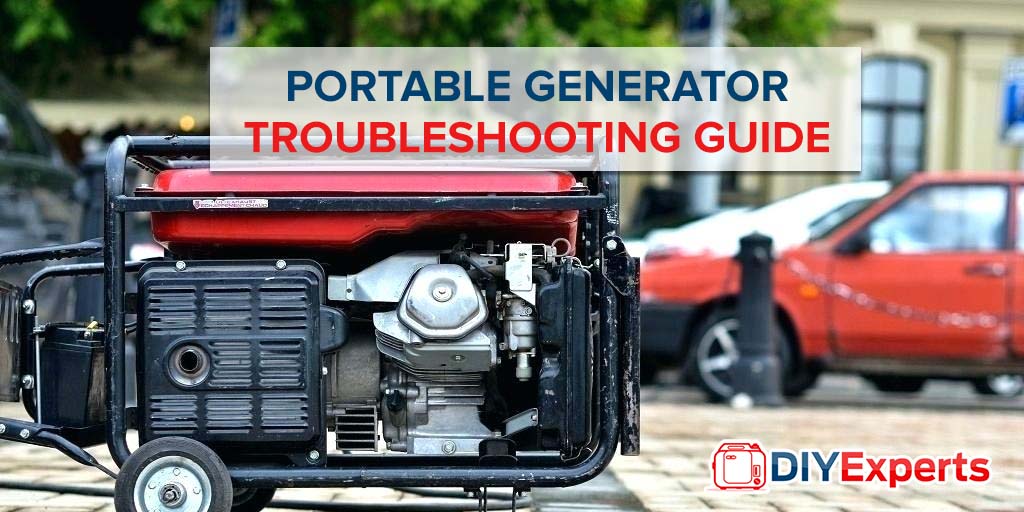 How much do you value your portable generator? Of course it’s one of those machines that are seldom used. Notwithstanding, any machine worth its salt must be in good shape whenever it’s needed. And isn’t it true that emergencies generally come unannounced? What if on the day of a sudden power outage your generator simply fails to start? In such circumstances what should you do? Here’s exactly what you must do.
How much do you value your portable generator? Of course it’s one of those machines that are seldom used. Notwithstanding, any machine worth its salt must be in good shape whenever it’s needed. And isn’t it true that emergencies generally come unannounced? What if on the day of a sudden power outage your generator simply fails to start? In such circumstances what should you do? Here’s exactly what you must do.
First of all, have a checklist. Often, the troubleshooting process alone would suffice to solve the matter. Of great help here is the specific generator manual. It helps you find exactly where the problem is. Start by checking whether the machine has enough gas and oil. Is the choke perhaps engaged? What of the fuel valve, is it on? Again, ensure you check the basics first.
Portable Generator Troubleshooting Checklist
Check the fuel
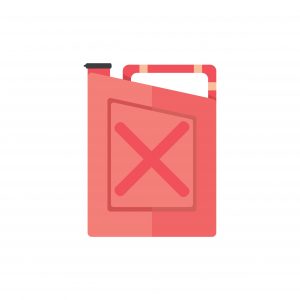 There’s always a chance that you may be getting a false fuel level indication when the fuel tank is actually empty. Often, a mechanical fuel level gauge in the generator can stick and cause this. Remember, there are generators that will not start at all if the tank is almost empty. In such situations, air is not drawn into the fuel system, leading to such failure. To solve this, regularly do a direct visual check to ensure the tank fuel level is functional. If necessary, add some fuel. Remember: Plain Water in the fuel tank can lead to degradation of diesel fuel. Be careful how you fill the tank when it’s raining or when you fill it by condensation. Avoid opening the tank on a warm humid day. If you don’t, moist air will get into the tank. If there’s a small amount of water in the tank, the fuel filters will clog, thereby limiting fuel flow into engine. Remember, water can also damage the engine. Check for some tell-tale signs: An abnormal odor or discoloration, for instance, is a sure sign of looming trouble. You certainly want to fix this.
There’s always a chance that you may be getting a false fuel level indication when the fuel tank is actually empty. Often, a mechanical fuel level gauge in the generator can stick and cause this. Remember, there are generators that will not start at all if the tank is almost empty. In such situations, air is not drawn into the fuel system, leading to such failure. To solve this, regularly do a direct visual check to ensure the tank fuel level is functional. If necessary, add some fuel. Remember: Plain Water in the fuel tank can lead to degradation of diesel fuel. Be careful how you fill the tank when it’s raining or when you fill it by condensation. Avoid opening the tank on a warm humid day. If you don’t, moist air will get into the tank. If there’s a small amount of water in the tank, the fuel filters will clog, thereby limiting fuel flow into engine. Remember, water can also damage the engine. Check for some tell-tale signs: An abnormal odor or discoloration, for instance, is a sure sign of looming trouble. You certainly want to fix this.
Check the Spark Plug
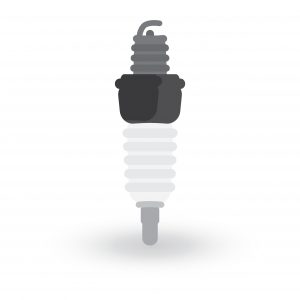 Find out, are there signs of wear and tear in the spark plug? You need to replace the plug fast in several situations: If the electrode seems to have a heavy carbon build up, if there’s a crack at the porcelain insulator or if an electrode is either damaged or burned away. A spark plug tester is highly useful in helping to indicate if the plug is actually defective. When the engine cranks, a strong spark usually comes up between the terminals of the tester. Lack of such a spark automatically indicates that you need to replace the defective plug.
Find out, are there signs of wear and tear in the spark plug? You need to replace the plug fast in several situations: If the electrode seems to have a heavy carbon build up, if there’s a crack at the porcelain insulator or if an electrode is either damaged or burned away. A spark plug tester is highly useful in helping to indicate if the plug is actually defective. When the engine cranks, a strong spark usually comes up between the terminals of the tester. Lack of such a spark automatically indicates that you need to replace the defective plug.
Check the Air Filter

It’s important to know how your generator actually functions. The machine always requires airflow to run. You need to know that a clogged air filter interferes with this process. Therefore, ensure the air filter is never clogged. In case it needs some cleaning go ahead and clean it. If you discover that the filter is clogged or is worn out then it’s time to replace it. Often, it’s advisable to have a spare filter around. Actually these are quite affordable.
Check the Battery
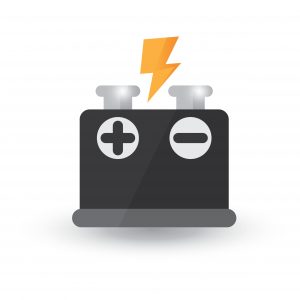 You should also remember that when a battery is neglected it just accumulates lead sulfate on the plates, especially when it’s not at full charge. When you recharge and discharge the battery all too often it can precipitate the problem. Eventually, you are bound to discover that the battery does not last long with its charge. If this happens, it will not be able to start the generator during emergencies.
You should also remember that when a battery is neglected it just accumulates lead sulfate on the plates, especially when it’s not at full charge. When you recharge and discharge the battery all too often it can precipitate the problem. Eventually, you are bound to discover that the battery does not last long with its charge. If this happens, it will not be able to start the generator during emergencies.
It might also be advisable to replace the battery if it is more than three years old or has been left unused for some time. It’s possible to a start a weak-battery generator just by tightening its connections and doing some meticulous cleaning. Many times, a generator tends to lose power due to dirty or loose connections. This causes resistance to electric current. Find out whether you can act early by replacing the battery before the due expiration date. You may discover that the generator isn’t providing sufficient power if the reflected power is not as high as set or is not equal to Forward power. Forward power refers to total engine capacity. Battery failure is usually a sign of an electrical wiring issue that needs fixing by a qualified expert. Avoid trying to do this yourself because you can damage the machine or expose yourself to danger.
Check the Oil Level
If you use a gas generator, you need to monitor the oil levels regularly. Of course, to function well, your generator needs a certain amount of oil. Ensure your machine always has the required amount of oil. Do not forget to add fresh oil regularly while, at the same time, discarding used oil.
When the Generator Won't start
Whenever this happens, immediately go to the basics. This means using a checklist. Start by trouble shooting and try to resolve the issue. Use the manual to put your finger on the problem. Check the gas and oil levels and determine whether the choke is engaged. Make sure the fuel valve is on.
Check the fuel line and filter
You have tried all the measures above and the generator still refuses to start, what next? Simple. Go ahead and check the fuel line. Ensure there are no leaks, cracks, clogs or pinches. Often, the only solution is to replace the line. If you are fortunate, you may succeed in repairing the damage. This is, however, rare. You can always decide to buy a spare line and have it on hand. Whatever the case, this is usually an uncommon issue. You need to check the fuel filter in case your generator has one. The reason is that it may just be clogged up. Go ahead and remove the fuel line from the point where it is attached to the carburetor. Check if the fuel is actually able to pass through the filter. If you discover that there is no gas coming out through the filter, then it might be time to replace it since it is likely clogged.
Clean the carburetor
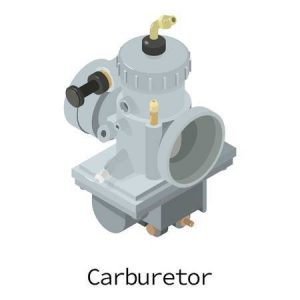 Many times, what causes generator problems are old, degraded gas that lurks in the carburetor. To solve this issue, just clean the carburetor using a carb cleaner that is sprayed into the orifices and jets out. Although carburetors are highly sensitive engine components, in certain situations you may have to remove and replace it. As you work on it, ensure you do not scratch it. While at this, make sure you know where each screw is. This activity involves dealing with very small engine parts and is therefore delicate. Ensure you keep everything intact.
Many times, what causes generator problems are old, degraded gas that lurks in the carburetor. To solve this issue, just clean the carburetor using a carb cleaner that is sprayed into the orifices and jets out. Although carburetors are highly sensitive engine components, in certain situations you may have to remove and replace it. As you work on it, ensure you do not scratch it. While at this, make sure you know where each screw is. This activity involves dealing with very small engine parts and is therefore delicate. Ensure you keep everything intact.
Check the Ignition Coil
What’s the function of an ignition coil? It ensures that, while the engine runs, the voltage is sent to the spark plug. Remember that the engine will simply not start if this coil is defective. You first need to confirm that the spark plug works well before deciding to replace the ignition coil. Once you confirm this, go ahead and test the coil using a recommended tester. If you find that the coil is the problem, do not hesitate to replace it.
Check the Start switch
The first thing you need to do when examining the start switch is to do a simple inspection. Find out if the spark plug is badly worn or damaged. There are situations that call for replacing the spark plug. In cases where the electrode has a heavy build-up of carbon or you find that it is damaged or burned away, there is no option but to do a replacement. The other scenario is when the porcelain insulator is cracked. Use a spark tester to discover whether the plug is actually defective and needs replacing.
Check out the Flywheel
What is a flywheel? The flywheel is a small component in the engine that works to restore momentum from combustion. It helps turn the crankshaft between the power strokes of the engine. It also cools the engine by impacting air distribution. In checking the flywheel, find out whether cracks exist in the crankshaft or broken fins. If they’re damaged, replace them. Ensure the keyway is similarly not damaged. All this is a simple, inexpensive process.
When the Generator Does Not Continue Running
There could be a number of reasons to explain why the generator might start but refuse to go on running. For one, the carburetor may be clogged. There may be used fuel lurking in the float bowl. In case some old fuel had been left in the engine for long, you may have a situation where the volatile ingredients evaporate. This lets behind some sticky substance. It might appear like shellack or varnish. The sticky fuel usually clogs the small ports and jets located in the carburetor. The result is failure of the engine to continue running as usual.
Happily, a solution exists. To solve this, drain the fuel from float bowl. After this, clean the carburetor thoroughly. In case these steps fail to work then only one option remains: You have to replace the carburetor in entirety.
Another factor that might stop the engine from running normally is unusual low level of fuel in the tank. Additionally, the fuel cap may be clogged, preventing air from entering the tank. Eventually, a vapor lock or vacuum might result. When this happens, the fuel flow to the carburetor stops, causing the engine to stall. To solve this, again, try to loosen the fuel cap. Restart the engine. If the engine starts this means that the fuel cap is clogged and must, therefore, be replaced.
When the Generator Runs Rough
There are a number of reasons why the generator run might get rough. The first, again, has to do with the carburetor. It might simply be clogged due to unused fuel staying in the generator for long. If the carburetor cleaner is unable to solve the clog then you may have to replace the carburetor in order to find a permanent solution.
Another remedy may involve dealing with spark plug issues. Confirm that the spark plug is neither worn out nor damaged. You may decide to get a new spark plug if you determine that the electrode is irredeemably burned away or that it is damaged beyond repair. This may also be the case if there is the presence of a heavy carbon build- up affecting the electrode, or if you find that there is a crack in the porcelain insulator. Use a plug tester to determine if the plug can still be used. If there is no spark produced then this is sufficient proof that the plug is indeed defective and must be replaced.
When the Generator Leaks Gas
What might result in generator gas leaks? It might be because the carburetor gasket is dried out or perhaps it’s missing altogether. You can try replacing the carburetor gasket if you find that the leak comes from the bottom. Additionally, it might be that the carburetor float bowl gasket that is located on the bottom is defective or non-existent. If you determine that this is actually the case, you may have little option but to replace the carburetor bowl gasket.
Why the Generator Battery Keeps Dying
Sometimes you may find that despite your best efforts, the battery attached to the generator just keeps dying off. The problem may have something to do with the voltage regulator. The function of this gadget is to ensure that the correct amount of voltage is sent from the alternator to the battery. When this system works well, the battery charging system functions optimally. In case the voltage regulator is actually defective, the battery fails to receive adequate voltage and the result is that it drains quickly and even dies off.
When the Generator Has Little Voltage Output
Sometimes a power generator might actually be running well but it produces little or no voltage in the process. What could be the issue? Also, what steps can you take to remedy this?
It could be that the generator has not been run for a long time. Or perhaps the idle machine was left connected to a load in that state. The result is often loss of residual magnetism. It’s worth noting, however, that most small generators have two coil-sets in place of magnets. One of these coils is usually stationary while the other spins. In this case, whenever the generator starts there will be no power produced due to lack of magnetic field.
In the ideal situation, there is usually a small magnetic field existing from the last time the machine ran. This produces a tiny amount of power, strengthening the magnetic field. The result is greater power produced and the cycle continues. In the end, the generator produces its rated power within a short time.
Another possible cause of low-voltage output might be due to a blown fuse, bad voltage regulator, bad brushes or a coil-break. Notwithstanding this, it is a well-established principle that loss of residual magnetism is usually responsible for the most common generator failures experienced.
Without going into much detail, how can you remedy this? One method is to try finding out where your generator’s voltage regulator is located. Remove the twin wires connecting to the brushes. Now connect the black or white wire to your generator’s ground battery terminal. Next, plug in a light then turn on your generator’s breaker or switch. Finally, start the motor. Connect the battery’s red cable to the red wire for just three seconds. Remove the wires and then replace the plug. At this point, your generator should start producing power normally.
Practice Regular Maintenance for Prevention
It can certainly be very frustrating when your generator fails to start during a power outage. To forestall this, the best remedy is to carry out regular preventive maintenance of the machines. In this respect, a manual comes in pretty handy. For most effective results, ensure you follow the maintenance schedule meticulously, just as laid out in the manual.
Apart from this, regularly check on your generator. Start it every once in a while. This makes sure it is still properly functional. How does this kind of check-up ultimately help you? Consider this: A sudden power outage occurs and you quickly rush for your generator. You start the machine and, alas, it fails! How much time do you have at this point to figure out why the machine has failed? Absolutely none! The big lesson? Don’t just allow your portable generator to gather dust, unused for long periods. Care for it, by regular check-up. If you make this your regular practice, the generator will not easily fail you when it matters most.
Finally, check the oil levels regularly. Check the spark plugs and oil filters. Ensure your generator is well prepared for emergency use by constant attention on its key functionalities. If the generator fails to be used for a long time because no need arises, ensure that the tank is kept dry or use a fuel stabilizer.
Conclusion:
You don’t have to run amok every time your generator fails to start during emergency. You just need some basic trouble shooting techniques to quickly restart the machine. In many cases this alone suffices as solution. However, sometimes despite all your best efforts, the generator may just refuse to start. In this situation, there is no option but to call in a qualified mechanic to do his job. Take some caution, though: If the machine is still covered by warranty, seek a certified technician for the job. Apply these sensible measures to ensure you get the most advantage from your valued portable generator kit.





I have a 6.5 generator that has been performing well. It has been running for several days now during a power outage and only shut down for refueling. This morning when I shut it down, I always turn off the transfer switch before doing so and then shut it down. I refueled it and started it back up again and turned the transfer switch back to generator power, but there was no output from the generator set. I checked the supply line from the generator to the transfer switch and then voltage at the generator itself. No output. Breaker is not thrown on the generator. Any thoughts?
I have a new Predator 6500
and recently needed it to power my rv. It worked well at first, but now it starts right up and runs well yet produces no power. One of the 120v outlets looks like one of it’s three plug receptacles has some sort of heat damage. None of the 4 120v outlets produce power. Any thoughts as to what’s going on? I’d like to be able to fix this myself because I’m pretty far away from town.
Battery on my generator reads 13 volts. Electric starter clicks but wont engage.
By accident power went back in my generator. What normaly does it damage
When I try to start my generator by pulling the rope it pulls back hard what causes it to do that. Also when i try to use the stater it can’t crank the engine i change battery
I’ve got a 3500 predator it has 47hrs.on it is checked the iol replaced the gas new. airfilter disconnected the low oil sensor and removed the exhaust spark thing still didn’t start cleaned it and put it back but the darn thing just refuses to start what do I do I really didn’t want to do the carburetor cut I’m at my wits end and about to say screw a generator and make a bon fire out of it
I have xp12000eh Gen works under small load 1/2 horse 220 when placed back on 3 hp 220 load it shudders and pulls motor of gen to a full stop . This has been its normal load for about 100 hrs . 3hp moter has been checked out it will run 3 hp motor fine if not under load
This is a very informative article on the causes why your generator won’t start. When the voltage regulator is actually defective, what should be done to fix this? Can we quickly replace the voltage regulator?